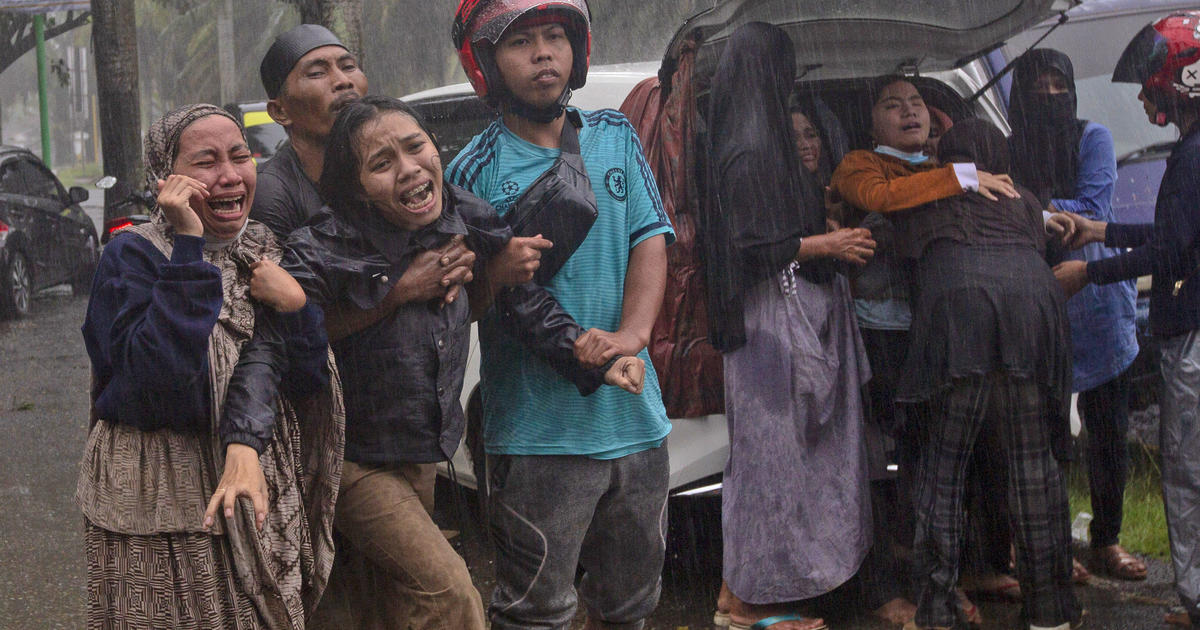
A strong and shallow earthquake shook the island of Sulawesi in Indonesia just after midnight on Friday, overturning houses and buildings, causing landslides. At least 42 people were killed.
More than 600 people were injured during the magnitude 6.2 earthquake, which sent people fleeing their homes in the dark. Authorities were still collecting information on the total extent of casualties and damage in the affected areas.
Yusuf Wahil / AP
Many people were reported trapped in the rubble of houses and collapsed buildings.
In a video released by the National Disaster Mitigation Agency, a girl trapped in the wreckage of a house called for help and said she heard the sound of other family members trapped. “Please help me, it hurts,” said the rescuer’s daughter, who replied that they desperately want to help her.
Rescuers said an excavator was needed to save the girl and others trapped in collapsed buildings. Other images showed a cut bridge and damaged and flattened houses.
The quake affected part of a hospital, and patients were moved to an emergency tent outside. Rescuers struggled to extract seven patients and staff who were trapped under tons of rubble. After a few hours, an excavator came to the rescue and rescuers eventually recovered four survivors and three bodies.
Another video showed a father crying, asking for help to save his children buried under their overturned house. “They’re trapped inside, please help,” he shouted.
Another video showed officials studying a house that was completely destroyed.
Thousands of displaced people have been evacuated to temporary shelters.
The quake was located 22 miles south of Mamuju district in western Sulawesi province, at a depth of 11 miles, the US Geological Survey said.
The Indonesian disaster agency said the death toll had risen to 34, while rescuers in Mamuju recovered 26 bodies trapped in the rubble of collapsed houses and buildings.
The agency said in a statement that eight people were killed and another 637 were injured in Mamuju’s neighboring district, Majene.
It is said that at least 300 houses and a health clinic were damaged and that about 15,000 people were housed in temporary shelters in the district. Power and telephones were faulty in many areas.
West Sulawesi administration secretary Muhammad Idris told TVOne that the governor’s office building was among those that collapsed in Mamuju, the provincial capital, and many people there remain trapped.
Lifeguard Saidar Rahmanjaya said the lack of heavy equipment prevented the operation of removing debris from collapsed houses and buildings. He said his team is working to rescue 20 people trapped in eight buildings, including the governor’s office, a hospital and hotels.
“We are fighting against time to save them,” Rahmanjaya said.
Relatives wept as they watched the rescuers pull a corpse of a loved one from a damaged house in Mamuju devastated. He was put in an orange bag and taken to the funeral.
“Oh, my God, why did we have to go through this?” cried Rina, who uses only one name. “I can’t save my dear sister … forgive me, sister, forgive us, Lord!”
President Joko Widodo said in a televised address that he had ordered his social minister and the heads of the army, police and disaster agency to take emergency response measures and search and rescue operations as soon as possible.
“On behalf of the Government and all Indonesians, I would like to express my deepest condolences to the families of the victims,” Widodo said.
The head of the National Search and Rescue Agency, Bagus Puruhito, said rescuers from Palu, Makassar, Balikpapan and Jakarta are seconded to help in Mamuju and Majene.
Two ships were heading to the affected areas of Makassar and Balikpapan, carrying rescuers and search and rescue equipment, while a Hercules plane carrying supplies was en route to Jakarta.
Puruhito is already leading more than 4,100 rescue personnel in a separate massive search operation for the victims of the crash of a Sriwijaya Air plane in the Java Sea last Saturday.
Among the dead in Majene were three people killed when their homes were flattened by the earthquake while they slept, said Sirajuddin, the head of the district’s disaster agency.
Sirajuddin, who is named after a single name, said that although the inner quake did not have the potential to cause a tsunami, people along the coastal areas ran on higher ground, fearing it might happen. .
The landslides were triggered in three locations and blocked a main road linking Mamuju to the Majene district, said Raditya Jati, a spokeswoman for the disaster agency.
On Thursday, a magnitude 5.9 earthquake struck the same region, damaging several homes, but did not cause any casualties.
The Indonesian Meteorological, Climatological and Geophysical Agency, known by its Indonesian acronym BMKG, has warned of the dangers of aftershocks and the potential for a tsunami. Its president urged people in coastal areas to move to higher ground as a precaution.
Indonesia, a vast archipelago of 260 million people, is frequently hit by earthquakes, volcanic eruptions and tsunamis due to its location on the “Ring of Fire”, an arc of volcanoes and fault lines in the Pacific basin.
In 2018, a 7.5 magnitude earthquake in Palu on the island of Sulawesi triggered a tsunami and caused the ground to collapse in a phenomenon called liquefaction. More than 4,000 people have died, many of whom were buried when entire neighborhoods were swallowed up in the fallen earth.
A strong earthquake and tsunami in the Indian Ocean in 2004 killed 230,000 people in a dozen countries, most of them in Indonesia.
